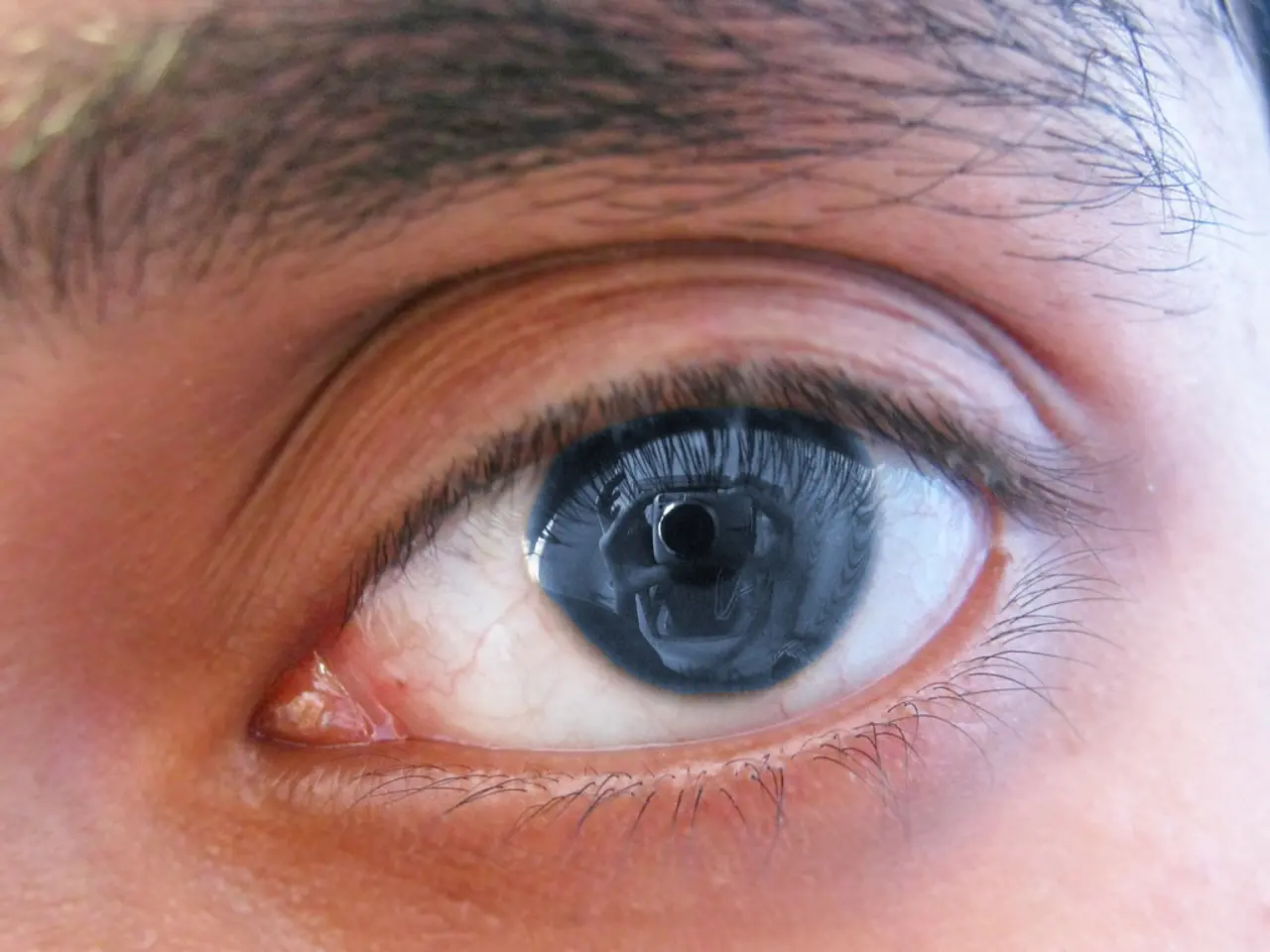Cellulitis in the orbit (area around the eye): Recognizing symptoms, identifying causes, and discussing treatment options.
Orbital cellulitis, also known as postseptal cellulitis, is a potentially sight-threatening infection of the soft tissues within the eye socket. This condition, which primarily affects young children, is often caused by the spread of infection from adjacent areas such as the sinuses or dental infections.
Common causes of orbital cellulitis include the spread of infection from nearby structures, such as sinusitis (infection of the sinuses) and trauma to the area around the eye. Dental infections, while less common, can also lead to severe orbital cellulitis. Common bacteria involved include Staphylococcus aureus and Streptococcus species.
Symptoms of orbital cellulitis include redness and swelling of the eyelids, pain around the eye and face, difficulty moving the eye and impaired vision, fever, general signs of infection, bulging of the eye, and in severe cases, signs of optic nerve pressure, such as vision loss.
Diagnosis of orbital cellulitis begins with a physical examination of the person's eye by an ophthalmologist, who may take a sample of the person's blood or discharge from their eye, analyze these samples to determine the causing germ, and recommend imaging tests to evaluate the extent of the infection and check for complications.
Treatment typically involves hospital admission for close monitoring, intravenous antibiotics targeting the causative bacteria, and in some cases, surgery to drain abscesses in the orbit or infected sinuses if the infection worsens or does not improve with antibiotics. Monitoring to prevent or detect any loss of vision or optic nerve damage is critical.
Healthcare professionals use broad-spectrum antibiotics to treat orbital cellulitis, effective against Staphylococcus and Streptococcus bacteria. Surgical treatment may be necessary if the infection does not respond to antibiotics, spreads to other parts of the head, or if there is an abscess, foreign object, fungal or mycobacterial infection.
Without treatment, sinus infections can spread to the fat and muscle surrounding the eye socket, leading to potentially life-threatening complications. Therefore, prompt medical attention is crucial for preventing complications such as vision loss and brain infections.
It is essential to seek immediate medical attention if you or your child experience symptoms of orbital cellulitis. Early diagnosis of orbital cellulitis is crucial for preventing severe complications. Possible complications of orbital cellulitis include vision loss, hearing loss, blood infection (sepsis), meningitis, cavernous sinus thrombosis, and intracranial abscess.
[1] Orbital Cellulitis. (2021). In StatPearls [Internet]. StatPearls Publishing. Retrieved from [2] Orbital Cellulitis. (2021). In UpToDate. UpToDate. Retrieved from
- Predictive analysis in healthcare can help identify at-risk patients for chronic diseases such as depression, bipolar, Alzheimer's, and respiratory conditions, enabling early mental-health, eye-health, and fitness-and-exercise interventions at the workplace-wellness level.
- The science of nutrition plays a vital role in managing chronic diseases, with a well-balanced diet contributing significantly to eye-health, skin-care, and overall health-and-wellness.
- Therapies and treatments can vary widely depending on the specific medical condition, from medication for depression to surgical procedures for orbital cellulitis or skin-conditions.
- Maintaining a regular exercise regimen is crucial for managing chronic diseases, improving mental-health, and supporting overall fitness-and-exercise efforts.
- Science continues to advance our understanding of bacterial infections like the ones causing orbital cellulitis, enabling more effective targeted therapies and treatments.
- Staphylococcus aureus and Streptococcus species are common bacteria associated with bacterial infections, such as orbital cellulitis and skin-conditions, making skin-care practices and hygiene essential.
- AQ (algotherapy) has shown promising results in the treatment of certain skin-conditions, offering new possibilities in dermatology and skin-care therapies.
- Alzheimer's disease is one of the most prevalent chronic diseases, affecting millions worldwide and often requiring ongoing medical management and support for mental-health and overall health-and-wellness.
- Bacterial infections can have far-reaching consequences if left untreated, with examples like orbital cellulitis potentially leading to life-threatening complications such as vision loss, brain infections, or sepsis.







